Bispyrithione
- CAS NO.:3696-28-4
- Empirical Formula: C10H8N2O2S2
- Molecular Weight: 252.31
- MDL number: MFCD00006197
- EINECS: 223-024-5
- SAFETY DATA SHEET (SDS)
- Update Date: 2025-12-18 17:17:19
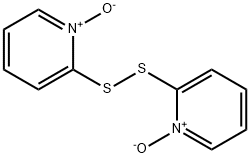
What is Bispyrithione?
Description
Bispyrithione is a pyrithione derivate used as bactericide and fungicide. The drug was marketed under the name Crimanex in the form of shampoo for the treatment of dandruff, however it is no longer available on the manufacturer website (Drossa Pharm . It is currently used as a pesticide.
Chemical properties
beige to slightly grey powder and chunks
The Uses of Bispyrithione
Bispyrithione can be used as an antibacterial; antifungal.
Indications
Scalp dandruff
Background
Dipyrithione, a bactericidal and fungicidal pyrithione derivate, was formulated as Crimanex anti-dandruff shampoo, but is no longer available. It is currently used as a pesticide, and not used in any FDA approved drug products.
Interestingly, dipyrithione has been studied and shown to have cytotoxic and potent broad-spectrum antitumor activity, which suggests a potential basis for an anticancer drug development.
Pyrithione derivatives, such as Pyrithione and sodium pyrithione, are widely used as cosmetic preservatives and as anti-dandruff agents in shampoos. It may be combined with other ingredients, such as triclosan to serve as antifungal and antibacterial skin treatments.
Dandruff is a common scalp disease affecting >40% of the world's adult population, and may be caused by fungi such as Malassezia globosa and M. restricta.
What are the applications of Application
Bispyrithione is a new antidandruff agent behind zinc pyrithione. It has similar chemical structure to zinc pyrithione, thus performs the same bactericidal property, with unique bactericidal actions, especially to mycetes, mild fungus and microzymes. It also can effectively disinfect oval bacil, candia albicans and other mycetes, while normal antimicrobials can't. It is not sensitive to metal ion and dissolves in water more easily than zinc pyrithione, which improves the compatibility and leads to best bactericidal effect. In 2-in-1 shampoo, it doesn't affect the pearly effect but enhance color stability.
Definition
ChEBI: Dipyrithione is a pyridinium ion.
Pharmacokinetics
This drug decreases or eliminates dandruff from the scalp, which is caused by various types of fungi.,
Synthesis
1, drop into successively the 600g2-chloropyridine in the 5000ml four-hole boiling flask, 100g maleic and acid anhydrides, 600g hydrogen peroxide (35%) are opened to stir and are warmed up to 60 ℃ of successive reactions 12 hours, make 2-chloropyridine-N-oxide water solution.
2, the 2-chloropyridine that uses the 4000g2-methyl chloride to divide four extractions to make-N-oxide water solution merges extraction phase, and condensing crystal makes sterling 2-chloropyridine-N-oxide compound.
3, the 2-chloropyridine that purification is obtained-N-oxide compound, 430g sodium sulphite, the 2000g high purity water, drop into successively in the 5000ml four-hole boiling flask, open and stir, be warming up to 70 ℃, along with the carrying out of reaction added a part of yellow soda ash in good time, the PH of adjustment system is stabilized in 9~10, and reaction finishes 70 ℃ of insulations 2 hours, and insulation finishes to cool.Make the pyrithione sodium water solution.
4, use an amount of dilute sulphuric acid to adjust the PH to 2 of pyrithione sodium water solution system, separate out a large amount of white crystals.Filtrated stock cleans solid, namely gets pyrithione.
5, the pyrithione that the reaction of upper step is obtained, the 1000g ultrapure water drops in the plastic cup, the unlatching dispersed with stirring is even, then slowly splash into 220g hydrogen peroxide (35%), reaction is 1 hour about 50 ℃, make finished product Bispyrithione 497g (99.72%, five step of content overall yield of reaction: 74.6%).
Metabolism
Not Available
Properties of Bispyrithione
| Melting point: | 200.5°C (rough estimate) |
| Boiling point: | 582.8±25.0 °C(Predicted) |
| Density | 1.4423 (rough estimate) |
| refractive index | 1.5650 (estimate) |
| solubility | Methanol (Slightly), Water (Slightly, Heated, Sonicated) |
| pka | -0.77±0.10(Predicted) |
| color | Gray or off-white paste |
| PH | 5.0-7.0(25°C,1%soln.) |
| Stability: | Hygroscopic |
| EPA Substance Registry System | Dipyrithione (3696-28-4) |
Safety information for Bispyrithione
| Signal word | Warning |
| Pictogram(s) |
 Exclamation Mark Irritant GHS07 |
| GHS Hazard Statements |
H302:Acute toxicity,oral H315:Skin corrosion/irritation H319:Serious eye damage/eye irritation H335:Specific target organ toxicity, single exposure;Respiratory tract irritation |
| Precautionary Statement Codes |
P261:Avoid breathing dust/fume/gas/mist/vapours/spray. P280:Wear protective gloves/protective clothing/eye protection/face protection. P301+P312:IF SWALLOWED: call a POISON CENTER or doctor/physician IF you feel unwell. P302+P352:IF ON SKIN: wash with plenty of soap and water. P305+P351+P338:IF IN EYES: Rinse cautiously with water for several minutes. Remove contact lenses, if present and easy to do. Continuerinsing. |
Computed Descriptors for Bispyrithione
New Products
Indole Methyl Resin tert-butyl 9-methoxy-3-azaspiro[5.5]undecane-3-carboxylate Boc-His(Boc)-OH 2-CTC Resin 4-Chloro-7-tosy1-7Hpyrrolo[2,3-d]pyrimidine 5,7-Dibromo-1H-indole 2,5-dichloro-N-hydroxy-4,6-dimethylpyridine-3-carboximidamide 2,2-Dimethoxy-7-azaspiro[3.5]nonane hydrochloride 4-chloromethyl-5-methyl-1,3-dioxol-2-one (DMDO-Cl) R-2-BENZYLOXY PROPIONIC ACID 1,1’-CARBONYLDIIMIDAZOLE 1,1’-CARBONYLDI (1,2-4 TRIAZOLE) N-METHYL INDAZOLE-3-CARBOXYLIC ACID 4-((2-hydroxyethyl)thio)benzoic acid 1-(TERT-BUTOXYCARBONYL)-2-PYRROLIDINONE Methyl 6-methylnicotinate 3-Pyridineacrylic acid tert-Butyl carbazate TETRAHYDRO-2H-PYRAN-3-OL 2-((4-morpholinophenylamino) (methylthio) methylene) malononitrile 3-(4-morpholinophenylamino)-5-amino-1H-pyrazole-4-carbonitrile 2,4-dihydroxybenzaldehyde 1,3-Diethyl-1,3-Diphenylurea Methyl 2-methylquinoline-6-carboxylateRelated products of tetrahydrofuran
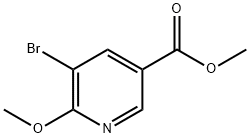
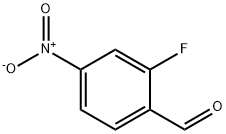
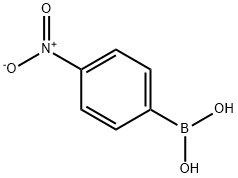

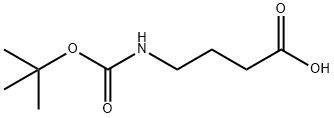
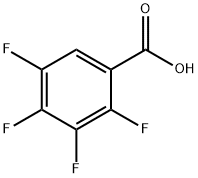

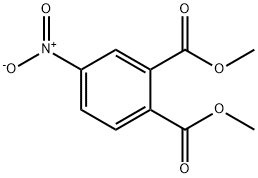
You may like
-
 2,2-Dithiobis (pyridine n-oxide), 98% CAS 3696-28-4View Details
2,2-Dithiobis (pyridine n-oxide), 98% CAS 3696-28-4View Details
3696-28-4 -
 Pyridine 99.5% HPLC /UV SpectroscopyView Details
Pyridine 99.5% HPLC /UV SpectroscopyView Details
110-86-1 -
 Guanine , 99%View Details
Guanine , 99%View Details
73-40-5 -
 Piperazine Spot supply, best priceView Details
Piperazine Spot supply, best priceView Details
110-85-0 -
 Dibutyl PhthalateView Details
Dibutyl PhthalateView Details
84-74-2 -
 Imidazole Spot supply, competitive priceView Details
Imidazole Spot supply, competitive priceView Details
288-32-4 -
 Octadecyl 3-(3,5-di-tert-butyl-4-hydroxyphenyl)propionate 98% (GC)View Details
Octadecyl 3-(3,5-di-tert-butyl-4-hydroxyphenyl)propionate 98% (GC)View Details
2082-79-3 -
 Thiourea 99% ARView Details
Thiourea 99% ARView Details
62-56-6
